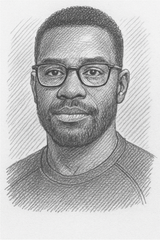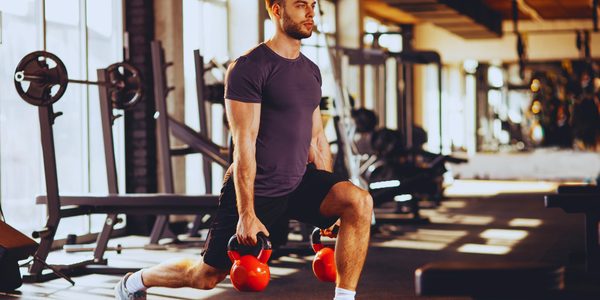The Most Painful Injuries and Tips for Recovering
Discover the most painful injury types that can occur and learn effective recovery strategies, from immediate first aid to long-term rehabilitation techniques for optimal healing

https://www.youtube.com/watch?v=1zw9JVXIg4s
Did you know over 302 athletes said Achilles tendon ruptures are the most painful? They take about six months to heal. Sports injuries can change an athlete's life in an instant, making recovery hard.
It's important for athletes and fitness fans to know about painful injuries. Whether you're a pro or just play on weekends, knowing how to handle severe injuries helps a lot. It makes recovery easier.
Athletes face big challenges with serious injuries that can keep them out of the. Injuries like ACL tears and hamstring pulls need quick action and careful rehab.
Key Takeaways
- Achilles tendon ruptures are among the most painful sports injuries
- Quick and proper injury response can significantly improve recovery
- Professional medical evaluation is crucial for serious injuries
- Recovery time varies depending on injury severity
- Prevention and proper training can reduce injury risks
Understanding the Most Painful Injury Types and Their Impact
Sports injuries can change an athlete's life in an instant. They create traumatic bodily injury scenarios that test physical and mental strength. Knowing about these injuries helps prevent and manage the pain from athletic mishaps.
Athletes face many injury risks that can cause extreme discomfort. Some injuries can be the worst they've ever experienced. Severe sports injuries need thorough knowledge and smart prevention.
Severe Sports Injuries: ACL Tears and Hamstring Pulls
ACL tears are a painful injury that often happens during quick changes in direction. These injuries put a lot of stress on the body and can end an athlete's career. Symptoms include:
- Sudden popping sound
- Immediate swelling
- Significant knee instability
- Intense pain during movement
Traumatic Joint Injuries: Ankle Sprains and Tennis Elbow
Joint injuries can severely affect an athlete's performance. Ankle sprains happen when the ankle twists unexpectedly. Tennis elbow is caused by repetitive arm movements, leading to severe pain.
Chronic Pain Conditions: Shin Splints and Nerve Damage
Chronic conditions like shin splints and nerve damage are long-term challenges for athletes. These injuries can cause ongoing discomfort, limiting physical activity and needing special treatments.
Recovery depends on understanding the injury's root cause and implementing targeted rehabilitation techniques.
Essential First Aid and Immediate Treatment Strategies
When you face a painful injury, fast and right first aid is key. It can greatly help in recovery and stop more harm. Knowing how to treat injuries quickly is important to avoid bigger problems.
The RICE method is a basic way to handle soft tissue injuries and pain. Here's how it works:
- Rest: Stop using the injured area to avoid more damage
- Ice: Use cold to lessen swelling and dull pain
- Compression: Use bandages to reduce swelling
- Elevation: Keep the injured area above heart level to cut down blood flow
Knowing when to get medical help is also key. You should get help if:
- The injury hurts a lot and doesn't stop
- Swelling doesn't go down in 48 hours
- You can't move much
- You see signs of infection
| Injury Type | Immediate Action | Warning Signs |
|---|---|---|
| Soft Tissue Injury | RICE Method | Intense Pain, Significant Swelling |
| Bleeding | Direct Pressure | Continuous Blood Flow |
| Suspected Fracture | Immobilize, Call Emergency | Visible Deformity, Extreme Pain |
Quick and correct first aid can lessen the injury's long-term effects. Always put safety first and seek medical advice for serious injuries.
Advanced Recovery Methods for Most Painful Injury Cases
Recovering from a severe sports injury or traumatic bodily injury needs a detailed plan. This plan goes beyond basic first aid. Professional medical care and strategic rehabilitation can turn an agonizing injury into a successful recovery journey.
It's important to understand the healing process for anyone with an injury causing extreme discomfort. Experts suggest a strategy that covers both physical and nutritional recovery aspects.
Professional Medical Interventions
Medical experts handle the worst injuries with great skill. Advanced recovery techniques can cut down recovery time and improve results. Key treatments include:
- Minimally invasive surgical procedures
- Regenerative medicine techniques
- Stem cell therapy
- Platelet-rich plasma (PRP) injections
Physical Therapy and Rehabilitation
Rehabilitation is key for severe pain injuries. Physical therapists create custom recovery plans. These plans focus on:
- Restoring joint mobility
- Rebuilding muscle strength
- Preventing future injuries
- Improving overall functional movement
Nutritional Support for Healing
Proper nutrition is vital for recovery. Strategic dietary choices can speed up healing and lower inflammation. Key nutritional supports include:
- High-protein foods for tissue repair
- Vitamin C-rich foods to support collagen production
- Omega-3 fatty acids to reduce inflammation
- Calcium and vitamin D for bone health
By combining professional medical care, targeted physical therapy, and comprehensive nutrition, individuals can improve their recovery. They can then return to their best performance.
Conclusion
Dealing with severe sports injuries is more than just treating the body. Each injury is different, needing special care. Athletes and patients must team up with doctors to find the right recovery plan.
Pain from injuries affects the mind too. Studies show that managing pain is not just about healing the body. At the National Institute of Arthritis and Musculoskeletal and Skin, experts stress the need for a complete recovery plan. This includes both physical therapy and taking care of mental health.
Recovering from a severe injury is about staying strong and hopeful. With the help of experts, a positive attitude, and a clear plan, you can get through tough times. Professional help is key to turning pain into a chance to grow stronger.
There's no one-size-fits-all solution for injury recovery. But, being patient, persistent, and proactive is crucial. By understanding your body, listening to doctors, and staying focused on healing, you can overcome even the toughest injuries.
FAQ
What makes an ACL tear such a painful and debilitating injury?
An ACL tear is very painful because it damages the ligament in your knee. It often happens during sudden stops or changes in direction. This causes severe pain, swelling, and makes it hard to move your knee.
Athletes might hear a popping sound when it happens. This is followed by intense pain that makes it hard to stand.
How long does recovery typically take for a severe hamstring pull?
Recovering from a severe hamstring pull can take 6 to 12 weeks. The time needed depends on how bad the injury is. Grade 3 tears, which are complete muscle ruptures, take the longest to heal.
Recovery involves a gradual program of exercises. This includes improving flexibility and strength, and slowly getting back to normal activities.
What are the most common causes of ankle sprains?
Ankle sprains usually happen from twisting movements or landing wrong during sports. Activities like basketball, soccer, and running increase the risk. The injury often occurs when the ankle moves suddenly to the side, stretching the ligaments too far.
This can cause immediate pain and damage to the tissues.
Can nerve damage lead to chronic pain?
Yes, nerve damage can cause chronic pain. This pain, known as neuropathic pain, can feel like burning or shooting. It doesn't usually respond to regular pain treatments.
Conditions like sciatica or peripheral neuropathy can lead to long-term pain. This pain can really affect your daily life.
When should I seek professional medical help for an injury?
Get medical help right away if you have severe swelling, can't bear weight, or have extreme pain. If the pain doesn't get better with rest, or if you have a visible deformity or a lot of bruising, seek help. These signs could mean serious damage that needs medical attention.
How important is nutrition in injury recovery?
Nutrition is key in recovering from an injury. It provides the nutrients needed for healing and reducing inflammation. Foods high in protein help repair muscles, while omega-3 fatty acids and vitamins C and D aid in healing.
Eating a balanced diet with lean proteins, antioxidants, and foods rich in minerals can help you recover faster.
What is the RICE method for injury treatment?
RICE stands for Rest, Ice, Compression, and Elevation. This method helps manage injuries by reducing swelling and pain. Resting the area prevents further injury, ice reduces inflammation, compression helps with swelling, and elevation drains fluid.
Using RICE within 48-72 hours of an injury can greatly improve your recovery.
How can I prevent sports-related injuries?
To prevent injuries, start with proper warm-ups and keep fit. Wear the right protective gear and learn the correct techniques for your sport. Gradually increase your training intensity and listen to your body.
Exercises that improve strength and flexibility can also lower your risk of injury.
👉 Join the Active Man Community
Get expert tips, workout guides, nutrition hacks, and the latest trends delivered straight to your inbox every week. No spam — just actionable insights to help you live stronger, healthier, and better.





